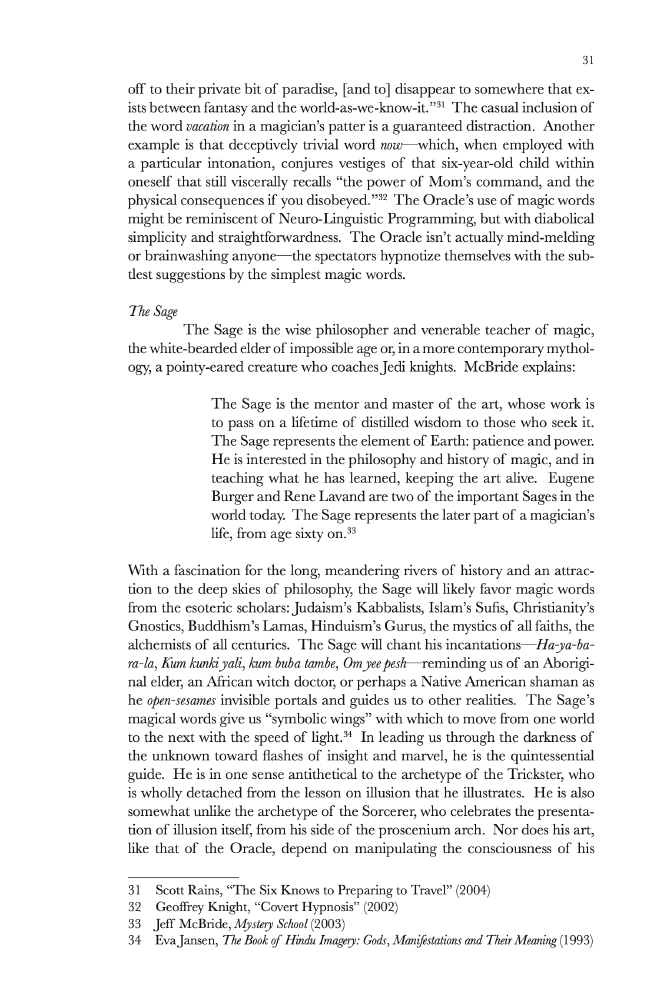
1
off to their private bit of paradise, [and to] disappear to somewhere that exists
between fantasy and the world-as-we-know-it." 1 The casual inclusion of
the word vacation in a magician's patter is a guaranteed distraction. Another
example is that deceptively trivial word now -- which, when employed with
a particular intonation, conjures vestiges of that six-year-old child within
oneself that still viscerally recalls "the power of Mom's command, and the
physical consequences if you disobeyed." The Oracle's use of magic words
might be reminiscent of Neuro-Linguistic Programming, but with diabolical
simplicity and straightforwardness. The Oracle isn't actually mind-melding
or brainwashing anyone -- the spectators hypnotize themselves with the subtlest
suggestions by the simplest magic words.
The Sage
The Sage is the wise philosopher and venerable teacher of magic,
the white-bearded elder of impossible age or, in a more contemporary mythology,
a pointy-eared creature who coaches Jedi knights. McBride explains:
The Sage is the mentor and master of the art, whose work is
to pass on a lifetime of distilled wisdom to those who seek it.
The Sage represents the element of Earth: patience and power.
He is interested in the philosophy and history of magic, and in
teaching what he has learned, keeping the art alive. Eugene
Burger and Rene Lavand are two of the important Sages in the
world today. The Sage represents the later part of a magician's
life, from age sixty on.
With a fascination for the long, meandering rivers of history and an attraction
to the deep skies of philosophy, the Sage will likely favor magic words
from the esoteric scholars: Judaism's Kabbalists, Islam's Sufis, Christianity's
Gnostics, Buddhism's Lamas, Hinduism's Gurus, the mystics of all faiths, the
alchemists of all centuries. The Sage will chant his incantations -- Ha-ya-bara-
la, Kum kunki yali, kum buba tambe, Om yee pesh -- reminding us of an Aboriginal
elder, an African witch doctor, or perhaps a Native American shaman as
he open-sesames invisible portals and guides us to other realities. The Sage's
magical words give us "symbolic wings" with which to move from one world
to the next with the speed of light. 4 In leading us through the darkness of
the unknown toward flashes of insight and marvel, he is the quintessential
guide. He is in one sense antithetical to the archetype of the Trickster, who
is wholly detached from the lesson on illusion that he illustrates. He is also
somewhat unlike the archetype of the Sorcerer, who celebrates the presentation
of illusion itself, from his side of the proscenium arch. Nor does his art,
like that of the Oracle, depend on manipulating the consciousness of his
1 Scott Rains, "The Six Knows to Preparing to Travel" (2004)
2 Geoffrey Knight, "Covert Hypnosis" (2002)
Jeff McBride, Mystery School (200 )
4 Eva Jansen, The Book of Hindu Imagery: Gods, Manifestations and Their Meaning (199 )